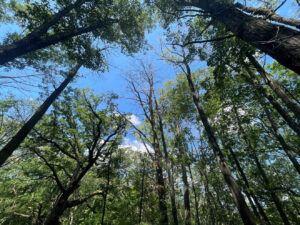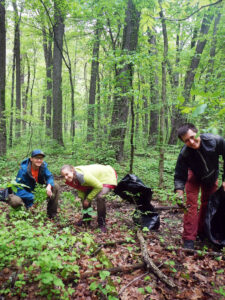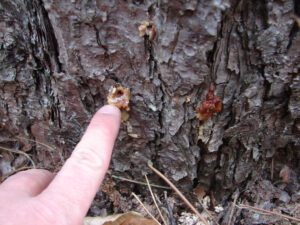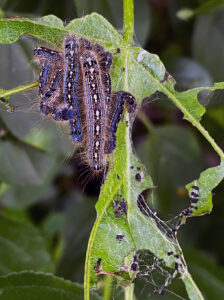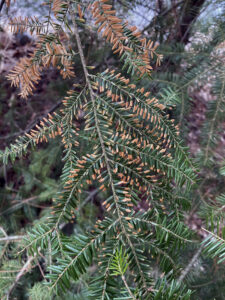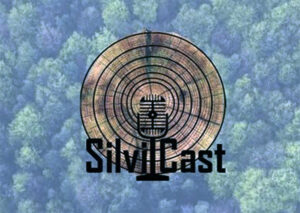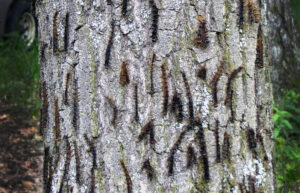
Spongy moth caterpillars killed by nucleopolyhedrosis virus (NPV) hang in an inverted “V” orientation; caterpillars killed by the fungus Entomophaga maimaiga hang vertically. / Photo Credit: Wisconsin DNR
By Michael Hillstrom, Wisconsin DNR Forest Health Specialist
Michael.Hillstrom@wisconsin.gov; 608-513-7690
Spongy moth caterpillars began hatching at the end of April in 2025 and are now actively feeding on leaves. In most Wisconsin locations, though, the population will not be as high as it has been in the last few years.
Wisconsin has had the largest outbreak in state history over the past few years. Fortunately, the outbreak collapsed in many areas of the state in 2024. The wet spring weather in April and May of 2024 allowed a fungus and a virus that infects spongy moth caterpillars to cause heavy mortality. Although some hot spots still exist in south central and northeast Wisconsin, we expect those populations to decline in 2025.

